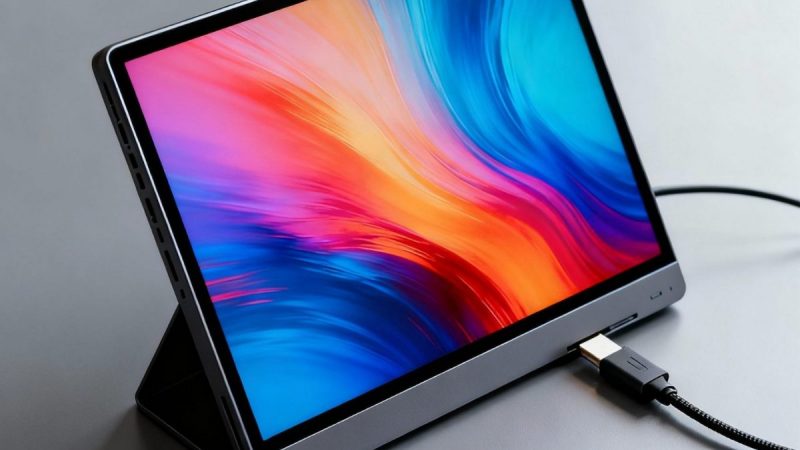Top 9 Technologies That Are Reshaping the TV and Cable TV Industry?

Thanks to advances in technology, the way we watch TV and cable is changing dramatically and promises to change more and more. From streaming services to apps, these top ten technologies are revolutionizing the traditional cable TV industry like never before. Whether you’re an avid fan of sports or a movie lover, you’re sure to find something new and exciting to enjoy on this list.
With these powerful options available, cord cutting has become a popular trend that gives viewers endless possibilities—and with it comes an abundance of entertainment choices! From revolutionary virtual reality experiences to clever multitasking apps, sit back and prepare for the ride of a lifetime as we dive into some of the most revolutionary TV and cable technologies available today!
9 Technologies That Have Changed Television and TV Cable
1. Internet TV
The term “Internet TV” most frequently refers to television programs that may be viewed online by downloading or streaming videos. Internet TV is frequently available to watch on demand, it may also be broadcast live. The content is kept accessible by Internet cable service by storing it on their servers. Usually, viewers check in to the website or use the provider’s app to access the material.
The best TV cable providers offer a variety of packages at varying pricing ranges, just like traditional cable. This is available at https://bestcablesatellitetv.com/. All you need is enough bandwidth to start streaming your favorite content on the provider of your choice.The greatest option for live events and more is available, and your viewing experience can be smooth and unbroken.
2. High Definition(HD) and 4K Technology
A television system that offers a noticeably higher image resolution than the preceding generation of technology is referred to as high-definition television (HD or HDTV).
The switch to digital technology has made it possible for us to view HDR images on our TVs today. Almost all modern TVs from well-known manufacturers are HD ready.
A screen needs to have up to 1080 interlaced lines of pixels to be considered high definition. More pixels will result, and they will be smaller and closer together. While some use the term Ultra HD (or UHD) to describe this image quality. Others use the more accurate word “4K” to describe any display format with a horizontal resolution of roughly 4,000 pixels.
3. RG Coaxial Cables
A TV set or set-top box should be connected to a TV aerial, satellite dish, or satellite receiver using an RG6 coaxial wire. Digital video and the internet are also used with it. RG-6 coaxial cables are more efficient for carrying GHz signals. This is because they are constructed with a different type of shielding and feature a 75-ohm impedance.
For domestic television, the coaxial cable should have a 75 Ohm impedance, with RG-6 being the best choice. RG-11 coaxial cable is the best kind for HDTV. This particular type of cable has a higher gauge than others, which gives signals more room to travel.
4. Second-Screen Technology In TV’s
This refers to technological innovations that connect people who watch television through digital communication.The actual channels of such communication can be connected to TVs, PCs, and mobile devices. They can be used for viewing or as second displays and that allows for social interactions that can improve fan experiences and possibly offer a show a second chance.
5. Google Chromecast and Mini Led TV
Google Chromecast connects to a television’s HDMI connector and can receive streaming video signals from Android or iOS devices, a nice change from its prior buggy living room hardware.
Mini LED, was just released. The Mini LED can produce an outstanding effect by embedding several mini-LEDs in the TV panel. Depending on the current it gets the Mini LEDs release light, enabling it to give exceptional picture quality.
6. Light-Emitting Diodes Technology
OLED TVs use electroluminescence to produce amazing effects. The ability to achieve the highest level of contrast is made possible by the fact that “each small OLED pixel in the screen creates light based on the amount of electric current.
The contrast ratio of an OLED display, which is calculated by dividing its ability to generate a complete black by the absence of any light, is theoretically unlimited.
This enormous range of contrast is what makes it “the only technology capable of absolute blacks. This also makes it produce extremely bright whites on a per-pixel basis. This is what produces the best picture quality.
Additionally, it can accomplish this on a screen that is exceedingly thin, light, and bendable. The ability to maintain consistent concentration is made possible by the curved screen’s curving trajectory, which is analogous to a person’s “Horopter Line.”
7. Smart TV Technology
Similar to smartphones and other smart home gadgets, smart TVs provide internet access and compatibility for a variety of apps. Smart TVs are revolutionizing how we watch television. From streaming services to smarter AI, these devices are transforming how viewers experience TV shows, movies, and live programming.
Smart TV technology is creating a new way for users to access content of all kinds—and cable companies aren’t about to be left behind. By leveraging the power of data and cutting-edge apps, these companies are reinventing their approach to the TV business. From multi screen viewings to personalized subscriptions plans, Smart TVs are revolutionizing the cable TV industry like never before.
8. Streaming Services On TV
What began as a single streaming service with a limited library has grown into a phenomenon that is revolutionizing how we watch TV. Not only do these services offer more choice than ever before – from content produced by cable channels to specialized streaming-only programming – but they are also providing viewers with a new level of convenience.
With streaming, you can stream anywhere and anytime on any device with an Internet connection, allowing for an unprecedented level of control over when and how you consume your entertainment.
As the streaming industry continues to expand and evolve, the effects on the traditional television and cable industries are becoming more evident. By streamlining their production processes and avoiding the enormous costs of advertising, streaming services are able to provide customers with better products at a lower cost, while gaining unprecedented levels of insight into their customers’ watching habits.
9. High Definition Multimedia Interface (HDMI )
Gone are the days of awkward cables trailing behind our screens in pursuit of high-quality video; with HDMI (High Definition Multimedia Interface) becoming the go-to choice, luxuriating in top-notch TV visuals has never been easier. Its ever-evolving features have led to the introduction of HDMI 2.1, adorning watchers with 8K resolution at 60 frames per second and 4K resolution at 120 frames per second.
Combined with support for Dynamic HDR, Quick Media Switching, and Variable Refresh Rates, this latest technology offers a striking visual experience that is sure to please gamers and home theater enthusiasts who take delight in immersing themselves in state-of-the-art entertainment.
Conclusion
The rapidly evolving television industry is being reshaped by the latest technological developments. From streaming services to online platforms, these technologies are introducing a new age of entertainment that promises an array of options for consumers.
Whether you’re looking for blockbuster movies or exclusive shows, it’s now easier than ever to stay up-to-date with your favorite form of entertainment – all without having to leave the comfort of your own home. Now you can experience your favorite TV shows and movies with breath-taking clarity and unparalleled sound quality, pushing the boundaries of what is possible in entertainment.
With so many revolutionary advancements popping up every day, there’s no telling what the resulting media landscape will look like. But one thing is certain: TV and cable have never been more diverse and exciting!






